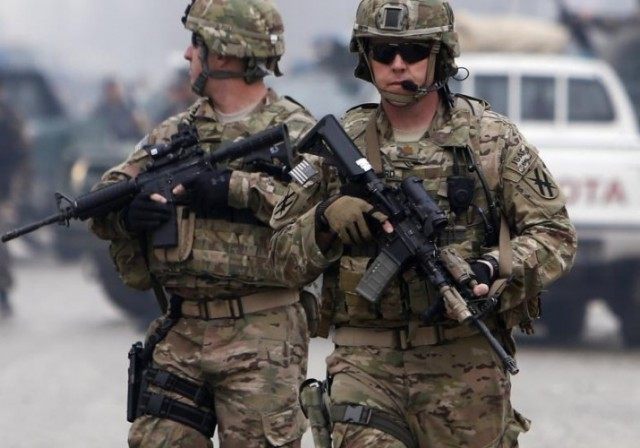WASHINGTON, D.C. — The top U.S. commander is employing a special authority recently granted by President Barack Obama to bring in additional troops into Afghanistan for an offensive against the Islamic State in their stronghold located in the eastern part of the country along the Afghan-Pakistan border.
Gen. John Nicholson, the top commander of U.S. and NATO forces in Afghanistan, told reporters on Thursday from his headquarters in the Afghan capital of Kabul that five American troops have already been wounded in the fighting.
He said:
There’s always some risk and indeed some of our servicemembers have been wounded in this operation: a total of five. None of these are life-threatening injuries. Two of the servicemembers have already been returned to duty with their units. The other three were evacuated out of theater. They’re in good spirits. They’ve talked to their families. We expect a full recovery.
The Pentagon revealed that one of the five was injured on Sunday and the other four Monday, all while supporting the Afghan security forces’ 2016 campaign dubbed Operation Shafaq (dawn), which is expected to culminate in eastern Afghanistan’s Nangarhar province, a stronghold of the Islamic State (IS), also known as ISIS and ISIL.
Referring to the injuries, the Associated Press (AP) reports:
It appeared to be the first reported instance of U.S. troops being wounded in fighting against the Islamic State in Afghanistan. [A] U.S. military spokesman in Kabul said they were researching the question of whether there have been previous casualties in combat with IS, which is present mainly in the country’s eastern regions. IS bases in the eastern province of Nangarhar, which borders Pakistan, are currently being targeted by an Afghan military offensive, backed by U.S. troops.
Without elaborating further, Gen. Nicholson indicated that the five wounded U.S. service members were struck by small arms fire or shrapnel during the operation against the Islamic State branch in the country known as the Khorasan Province (ISIL-K/IS-KP).
The Nangarhar offensive, under Operation Shafaq, began Saturday as ISIL-K claimed responsibility for the deadliest attack of the nearly 15-year war, which occurred in the Afghan capital of Kabul, killing 80 people and injuring another 231.
The recent U.S. military casualties come after President Barack Obama ended the U.S. combat mission in Afghanistan at the end of 2014, marking the beginning the train, assist, and advise (TAA) role for American troops.
“Our combat mission in Afghanistan is ending and the longest war in American history is coming to a responsible conclusion,” said the president in December 2014.
However, a watchdog agency appointed by Congress found that the U.S. military has since been drawn into combat by a resilient Taliban and now ISIL-K.
“We will continue to stay after Daesh (ISIL-K) until they are defeated here in Afghanistan,” said Nicholson.
According to the Pentagon, 2,215 U.S. troops have been killed and another 20,051 wounded (including the recent five injuries) in Afghanistan since the conflict started in October 2001. The large majority (about 75 percent of deaths and 90 percent of injuries) have taken place under Obama.
Gen. Nicholson noted:
We have helped the Afghan security forces to reclaim significant portions of the territory that was previously controlled by Daesh [ISIL]. We have killed many Daesh commanders and soldiers, destroyed key infrastructure capabilities, logistical nodes, and Daesh fighters are retreating south into the mountains of southern Nangarhar as we speak…
This fight against Daesh is critical. It’s nested within a larger global strategy against Islamic State. It, in fact, coincides with ongoing operations in Iraq and Syria.
The top U.S. general revealed that the number of ISIL-K fighters has dropped substantially — from an estimated peak of 3,000 to “between 1,000 and 1,500 at the present time.”
In an interview with the Wall Street Journal (WSJ), Gen. Nicholson refused to say how many additional troops had entered Afghanistan to fight ISIL-K.
Referring to authorities recently granted by Obama, he said:
If I need to, I can bring in additional assets, and this could be reconnaissance, it could be air assets, it could even be ground assets. We brought in additional assets this time and we’ll do it again as needed to defeat [ISIL-K].
According to the United Nations, civilians casualties reached an all-time high during the first six months of this year — 5,166 (1,601 deaths and 3,565 injuries).

COMMENTS
Please let us know if you're having issues with commenting.